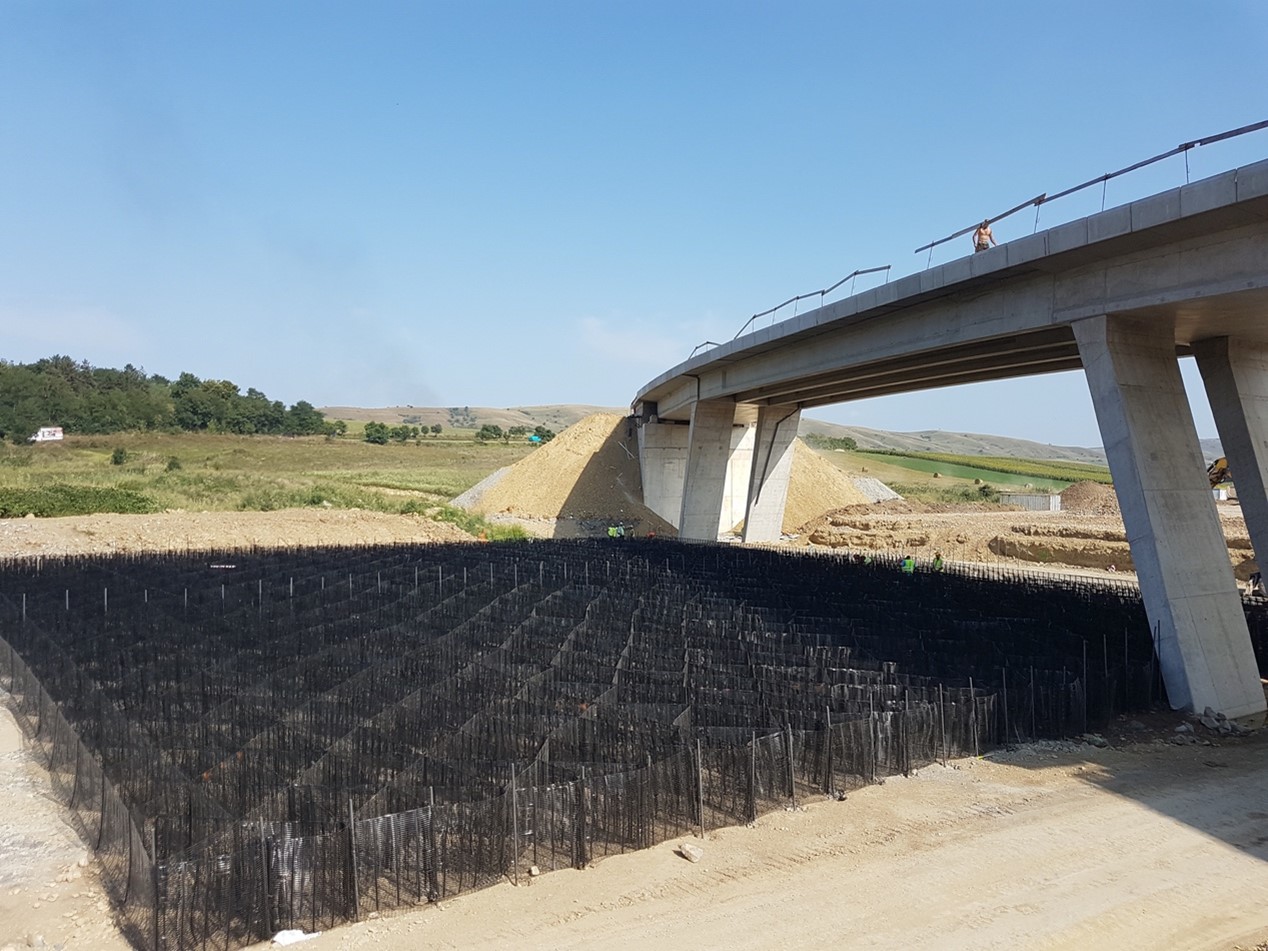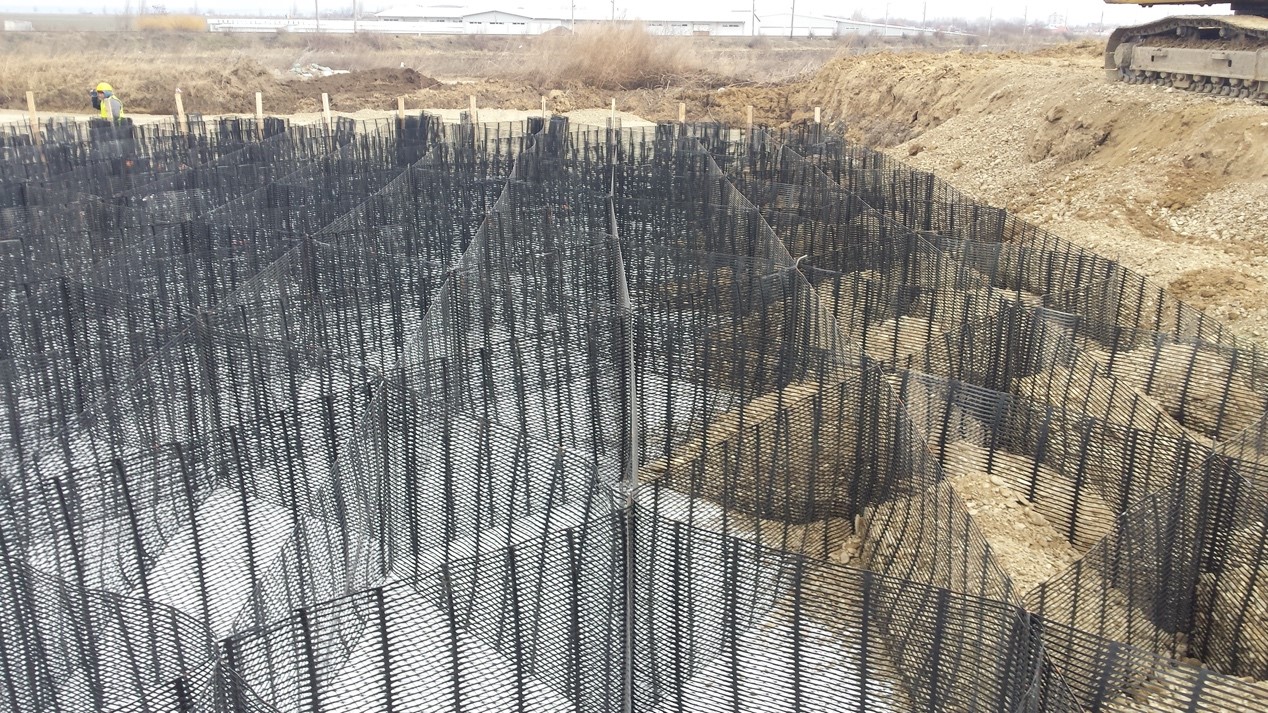Accelerating construction, delivering long term performance
by Kasia Zamara, on November 05, 2020
Mechanically stabilised layers and cellular foundation mattresses are proven and economical alternatives to traditional embankment foundations.
Embankments are a key feature of many infrastructure projects, from roads, to railways and flood defence schemes. It is vital these structures are built on firm and stable foundations with long operational lives, which can be a challenge when dealing with weak, variable and saturated soils.
Traditionally, the answer has been to dig out weak ground and replace it with engineered fill, to pile the embankment or to install vibro concrete or stone columns. Of course, these approaches are technically valid, but they are also expensive and time consuming, often involving extensive temporary works.
Geosynthetic solutions, on the other hand, offer viable, proven alternatives, delivering long-lasting, stable foundations that are easier and faster to build than traditional methods, cutting construction time and costs.
They also offer the opportunity to reduce the amount of excavation of unsuitable soils and their replacement with engineered fill, delivering thinner structures without compromising on performance, while reducing a project’s carbon footprint.
Mechanical stabilisation
As we have discussed many times before on this blog, granular layers incorporating stabilising geogrid perform as composites, increasing bearing capacity and mitigating both total and differential settlement. Multiple layers of geogrid are often used within embankment material or are used to stabilise the subgrade beneath, to provide a stable foundation.
Cellular mattress foundations

Over the past couple of weeks I have looked at geosynthetic cellular foundation mattresses and how they can be applied to temporary works but these systems are equally valid for permanent embankment structures.
A cellular foundation mattress forms a stiff foundation base for an embankment structure that improves differential settlement of the structure. It reduces potential slope stability issues within embankment fill, forcing these potential failure planes deeper, into stiffer strata below.
Additionally, the geogrid forming the structure of a cellular mattress reduces lateral spread through interlock (preventing lateral movement of the embankment fill) and also ensures mobilisation of the maximum shear capacity of the ground below, further increasing stability. Cellular mattresses can also readily accommodate vertical band drains, to accelerate consolidation settlement during construction.
Stratum enables rapid construction of embankment on the Tecuci Ring Road
Main contractor Eurocogen Filiala Aninoasa needed a way of building the final section of the Tecuci Ring Road in Romania over an area of marshland. The solution needed to enable fast construction of a road embankment built over the weak, saturated soils, with minimal settlement, and also had to ensure the road’s long term performance.

Tensar’s Stratum cellular foundation mattress created a 1m thick stiff foundation for the entire 10,000m2 footprint of the road embankment. This reduced both short term and long term settlement and increased the ground’s bearing capacity, enabling construction to be carried out quickly and safely.
The full case study can be downloaded here.




.jpg?width=400&height=400&ext=.jpg)